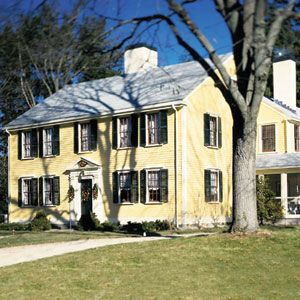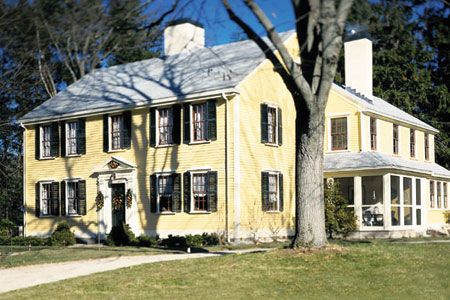
When I arrived at the job site in Milton the question was “Can these windows be repaired?” Most likely original to the c.1725 building, these were some of the oldest windows I had ever inspected. On first glance, the peeling paint and failing glazing compound made a good case for replacement. However, after all the years I’ve put in inspecting and repairing old windows, I know not to rely on a visual inspection. Just below a surface of peeling paint may lie some quality old-growth wood.
Saving objects made from such wood makes a lot of sense. In ancient forests trees grow slow and straight, fighting for light and nutrients. America’s older buildings are built from lumber that came from the virgin forests the early settlers found growing here. With up to 30 growth rings per inch, this clear and dense wood is superior in stability and decay resistance to today’s commercially available lumber.
Since most commercially available lands have been cleared of their original old growth, lumber companies now plant and harvest genetically altered trees to grow to maturity in 15 years or less. With growth rings of three to five per inch, this material tends to be less stable and more prone to decay. Plantation-grown material is less effective in holding paint, as it expands and contracts at a much higher rate.
Most people are surprised to find that just below the surface of a seemingly unsalvageable piece of wood is quality wood, sound and bright as the day it went in. A simple visual inspection does not tell the entire story. Inspecting with an awl or a pen knife will allow one to “see” beneath the wood surface. In many cases the decayed or damaged wood is only
near the surface. Too often ancient but high-performance lumber gets replaced with inferior plantation-grown material.
The folks at This Old House were pleased with the diagnosis that their old windows could and should be saved. Most of the wood damage was only superficial. Now the issue became thermal efficiency.
Without any weatherstripping or storm windows in place, the Milton windows leaked a ton of air. A common approach to increasing the efficiency of single-glazed sash windows is to replace them with new insulating glass units. Contrary to popular belief, very little energy efficiency is realized this way, and such a move rarely justifies the cost; on average, it takes over 50 years to recover the expense. With an average expected life of 25 years or less, insulated glass units made little sense for this project. Besides, we wanted to retain the historic look of the old building.
Up to 85% of a window unit’s heat loss is through its poorly weather-sealed sash. For the Milton house, we used a modern nylon pile weatherstripping installed in a kerf we cut in the sash. This material stopped 95% of the air infiltration and greatly improved the windows’ operation.
The conservation of the old windows in the Milton project was an opportunity to maintain architectural integrity and retain the quality old-growth lumber. Repairing the windows kept them in their openings and out of the landfill.

